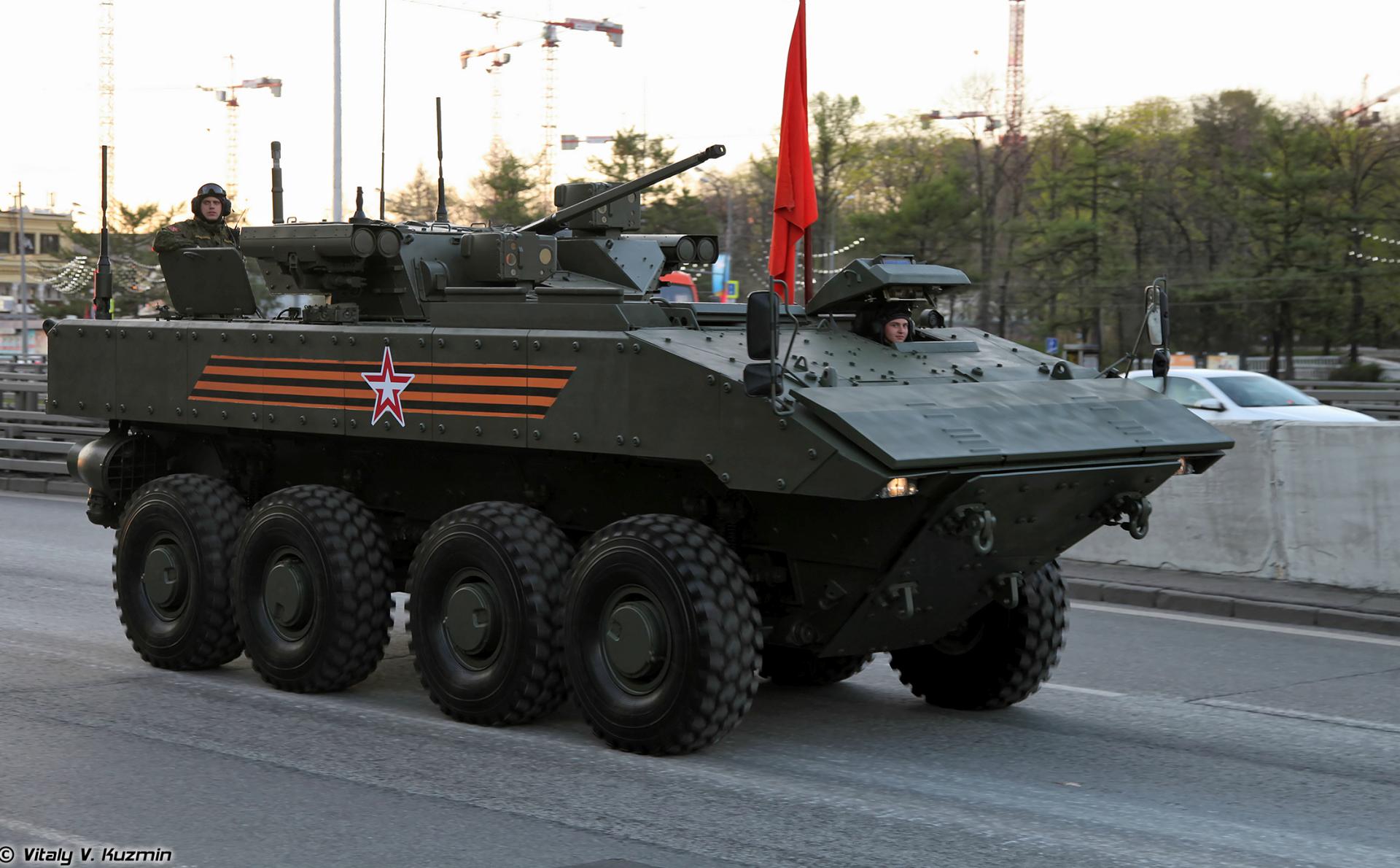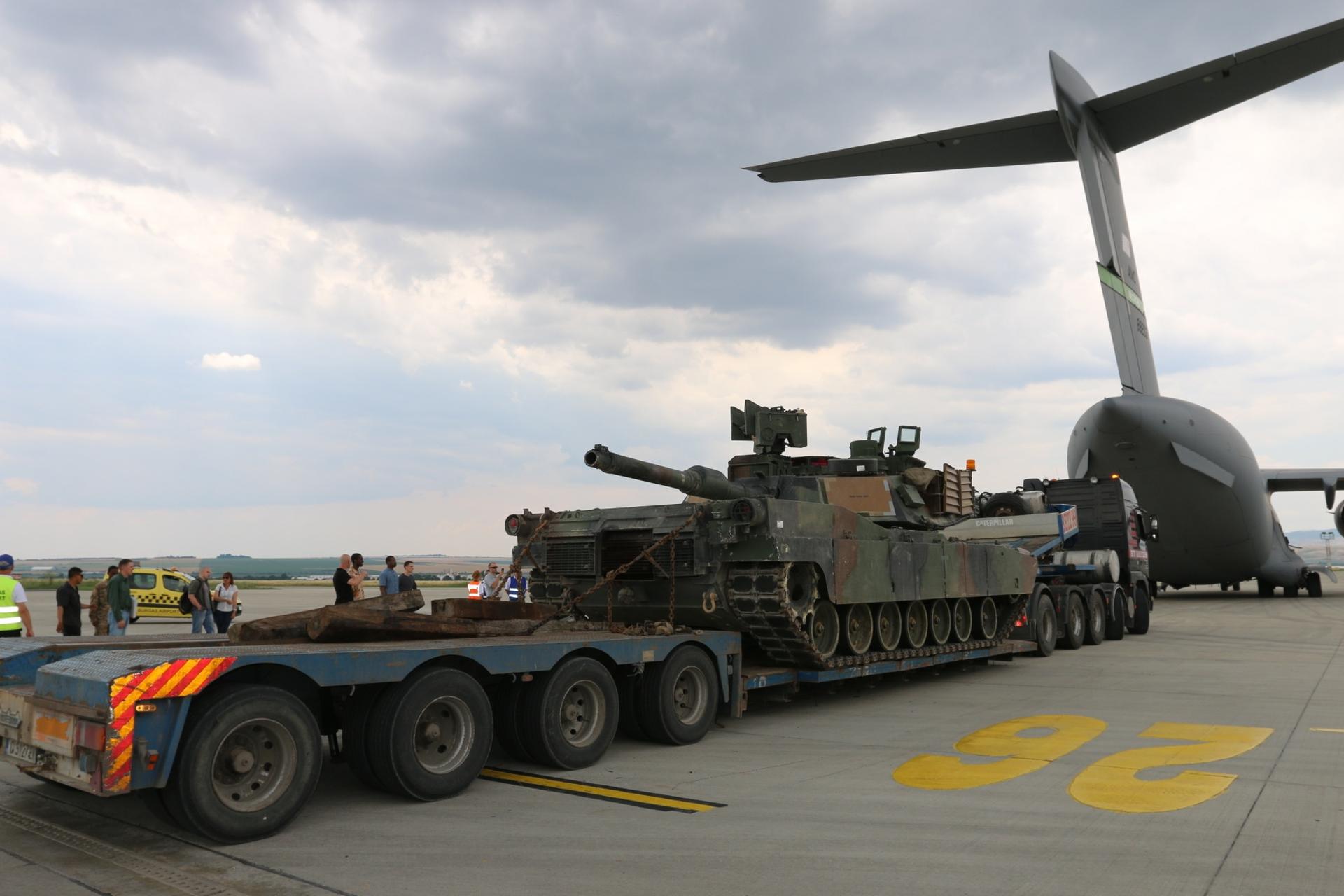On May 9, 2015, at the annual Victory Day parade in Moscow, the Russian military formally unveiled the first prototype models of its long-gestating Bumerang 8×8 wheeled armored vehicle platform.
The Bumerang’s completely revamped hull configuration and emphasis on modular functionality and improved crew and passenger survivability serve as potent indicators of the Russian defense industry’s vigorous commitment toward making a clean break from traditional Soviet-legacy design principles.
The design of the Bumerang draws considerable inspiration from prominent Western European wheeled armored vehicles, such as the ubiquitous Piranha series produced by General Dynamics European Land Systems and Nexter’s Véhicule Blindé de Combat d’Infanterie (VBCI).
In addition, the Bumerang’s V-shaped hull and integration of a rear access and egress door were in part driven by the need to rectify many of the most vociferous and long-standing criticisms of the Russian military regarding the field performance of the previous BTR-60, BTR-70 and BTR-80 series of vehicles.
The Bumerang model will initially consist of two primary variants: an armored personnel carrier and an infantry fighting vehicle.
The APC model is equipped with a remotely operated turret armed with a 12.7mm machine gun, while the IFV variant utilizes the same Epoch series remotely controlled turret as the T-15 Armata heavy IFV and the Kurganets-25 IFV. The Epoch turret is outfitted with a 2A24 30mm cannon and 7.62mm coaxial machine gun, and also mounts four Kornet-M ATGM pods.
Over the coming decades, the Russian Ministry of Defense intends to develop a broad range of specialized variants based upon the core design of the Bumerang platform.
The Russian MoD has outlined an extraordinarily demanding production target for its newest family of vehicles, calling for the acquisition of thousands of new-build units over the coming decade. However, although the Russian government has invested significant funds in the country’s domestic defense industry in recent years and raised overall levels of defense spending, there remains considerable doubt over the capability of the country’s defense-industrial base to meet such an ambitious timeline.
These efforts will only be complicated by the Russian economy’s current state of malaise, resulting from both consistently low oil and gas prices and the political fallout from Russia’s annexation of the Crimean Peninsula and ongoing military engagement in Eastern Ukraine.
According to Russian officials, the Army intends to induct the first serial-production Bumerang vehicles into active service in late 2015 or early 2016. Nevertheless, the planned scale of Russian Bumerang procurement is dwarfed only by the even greater quantity of aging armored vehicles in need of replacement.
The composition of the Russian military’s mechanized forces remains numerically dominated by the increasingly archaic BTR-80 base model, with the comparatively modern BTR-80A and BTR-82/82A variants making up a significantly smaller percentage.
Production of the Bumerang alone would not prove sufficient to maintain the technological relevancy and peak state of operational readiness that is demanded of the mechanized forces of the Russian Army and Naval Infantry. As such, it will be necessary for the Russian military to continue its acquisition of the new-build BTR-82/82A and 82AM models through the forecast period.
In addition, the Russian armed services will continue to pursue a concurrent effort aimed at modernizing and retrofitting existing BTR-80/80A vehicle stocks to the BTR-82A/82AM standard.
The Russian military has ceased new-build acquisition of the BTR-80A model, though it remains available for sale on the export market.
The BTR-80 series will remain a fixture on the international market for armored vehicles for many years to come. The continual introduction of new modernization packages and enhanced variants, such as the BTR-82A, of the core vehicle design have allowed the series to remain relevant even as more modern APC designs have largely abandoned many of the core vehicle’s design principles.
In 2009, Venezuela ordered a total of 114 BTR-80As, and subsequently placed a follow-on order for an unspecified quantity of additional vehicles in 2012. The most recent reported shipment of BTR-80A vehicles to Venezuela took place in April 2014, and additional, unreported deliveries have likely been made since then.
Azerbaijan has an unspecified number of BTR-82/82A vehicles on order as part of a larger defense package that includes T-90S main battle tanks, BMP-3 APCs, and an array of conventional and rocket artillery platforms. Deliveries of the BTR-82/82A vehicles to the Azeri Army are thought to be ongoing, but details remain sparse.
The high level of customer familiarity with the BTR family, combined with the vehicles’ consistently low unit cost, high ease of maintenance, and extensive components network, will ensure a healthy level of market interest for the vehicles through the forecast period.
However, new-build production of the BTR-80 series is likely to begin a sharp decline after 2024 as many prominent operators of the vehicle begin to retire their vast stocks of the design.
In the coming decades, the increased market saturation of this already ubiquitous vehicle series is likely to make most potential customers gravitate toward the procurement of less expensive, but equally capable, retrofitted surplus models rather than pursue a more costly new-build solution.











